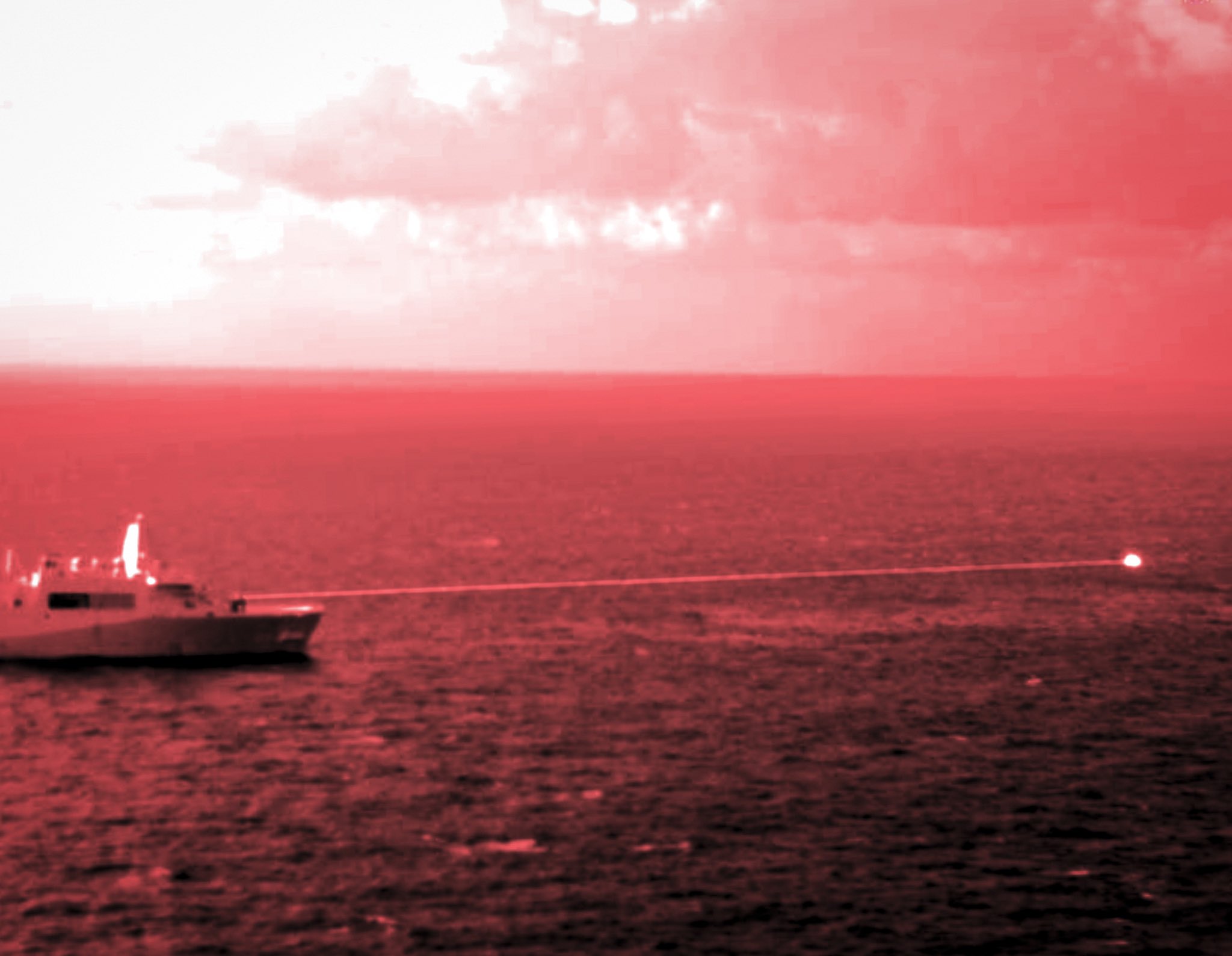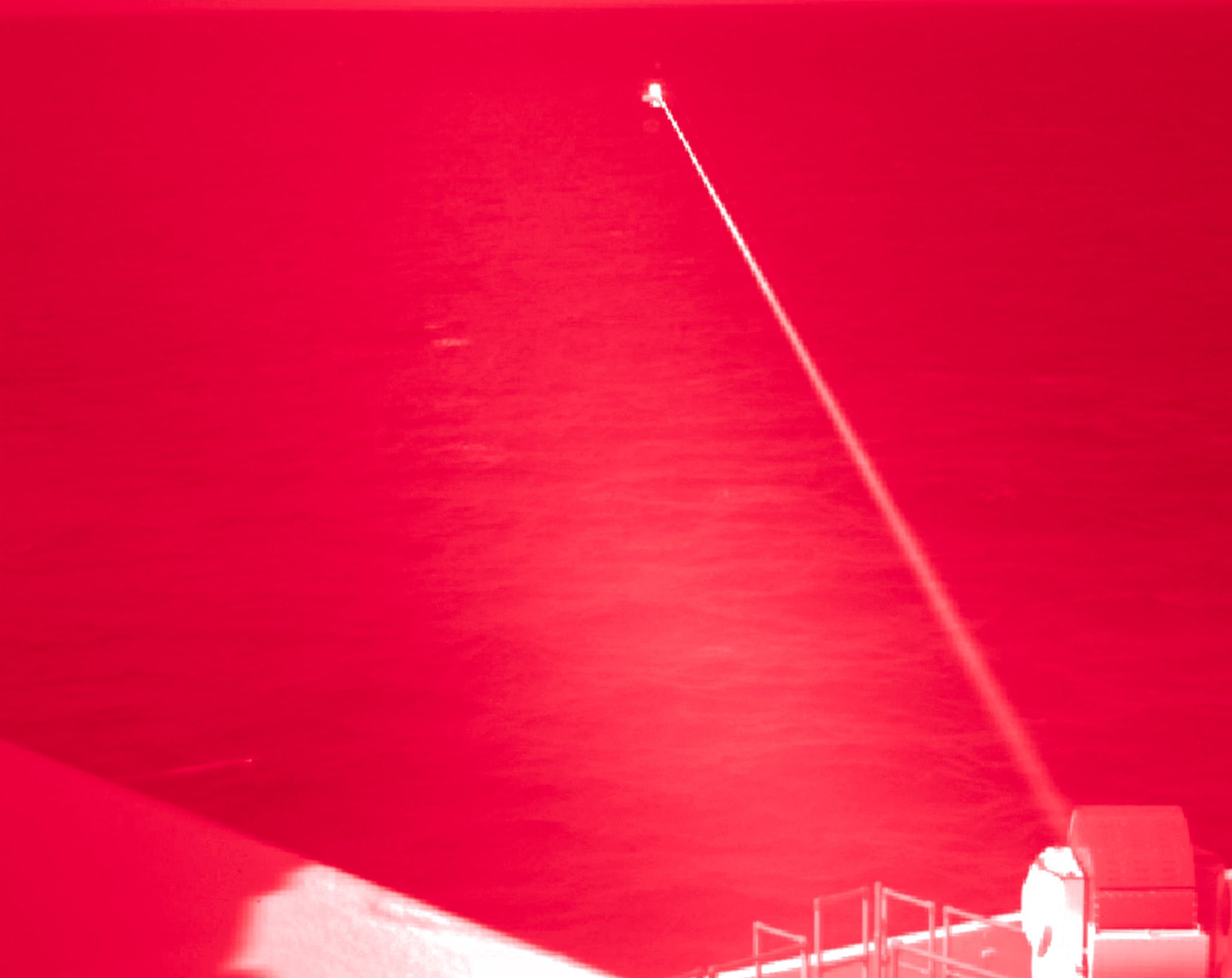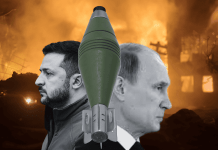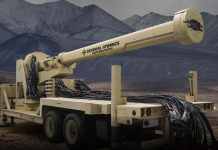The US Navy ship, USS Portland, is currently deployed to the Middle East as part of the Essex Amphibious Ready Group. The San Antonio class amphibious transport dock ship tested a laser weapon by shooting at a floating target, the US Navy announced on December 15.
The service claims that the laser weapon system, seen as the “most powerful one” to be deployed on an operational vessel, can be used against potential bomb-laden drone boats operated by Yemen’s Houthi rebels in the Red Sea.
The weapon, officially called the Laser Weapon System Demonstrator (LWSD) Mk2 Mod 0, was received by the USS Portland in late 2019. It was first tested by the vessel in May 2020 to shoot down a small drone in the Pacific Ocean.
On December 14, the USS Portland test-fired the LWSD at the target in the Gulf of Aden, which separates East Africa from the Arabian Peninsula. According to the US Navy’s Middle East-based 5th fleet, Portland’s laser weapon “engaged” the training target during the course of the demonstration. It did not specify the extent of damage incurred by the target or if it was destroyed as a result of the firing.
“The LWSD [Laser Weapon System Demonstrator] is considered a next-generation follow-on to the Laser Weapon System (LaWS) that afloat forward staging base USS Ponce (AFSB(I)-15) tested for three years while operating in the Middle East,” according to a Navy release on the demonstration in the Gulf of Aden.
“The region’s geography, climate, and strategic importance offer a unique environment for technology innovation,” the release read.
The LWSD Mk 2 Mod 0 was developed by Northrop Grumman for the US Navy as part of the Solid-State Laser Technology Maturation (SSL-TM) program and is a 150-kilowatt class laser weapon. This was designed as a close-in defense system for helping in countering the threats posed by unmanned aircraft and small boat swarms.

It can also be used as a surveillance system owing to its full-motion video cameras which are otherwise used by the weapon platform for detecting and tracking targets for the laser.
“By conducting advanced at sea tests against UAVs and small crafts, we will gain valuable information on the capabilities of the Solid State Laser Weapons System Demonstrator against potential threats,”, Capt. Karrey Sanders, the previous commanding officer was quoted as saying by Business Insider. “With this new advanced capability, we are redefining war at sea for the Navy.”
The Gulf of Aden is located off the southern coast of the war-torn nation of Yemen, which has been at war ever since the Iran-backed Houthi rebels seized Yemen’s capital city Sanaa in 2014. A Saudi-led coalition entered this conflict in March 2015; however, the war has dragged on for years, killing an estimated 230,000 people and displacing millions, Middle East Eye reported.

The war also has spread into its surrounding waterways, such as the Red Sea and the Bab el-Mandeb, which connects the sea to the Gulf of Aden. These waterways lead to the Suez Canal and further to the Mediterranean Sea. Due to this, they are very crucial for international trade and the global energy supply.
According to reports, the Houthis have placed unmanned boats into these waters. These boats can be piloted remotely and can be sent to the target’s location before detonating. There is speculation that Iran helped the Houthis in building these boats, Associated Press (AP) reported.
Amphibious transport dock ship USS Portland (LPD 27) conducted a high-energy laser weapon system demonstration, Dec. 14, while sailing in the Gulf of Aden. Read more ⬇️https://t.co/nYWqgtbLdQ pic.twitter.com/L0xfysIG1q
— U.S. 5th Fleet (@US5thFleet) December 15, 2021
In 2018, Emirati officials shared video footage of a drone boat claiming Iranian parts or equipment was used in the boat’s guidance system. A hat was also visible in the background of one picture displaying the symbol of Iran’s paramilitary Revolutionary Guard.
However, Iran has denied providing aid to the Houthis even though United Nations experts, independent analysts and other Western countries have pointed at evidence which links Tehran to the weapons of the Houthis, the AP reported added.
Game Changer?
Laser weapon systems are gaining more and more prominence especially after the ‘drone menace’ has increased and can potentially change the course of the war as seen during the Armenia-Azerbaijan conflict.
Lasers provide the huge advantage of speed, stealth, precision and also a “virtually unlimited magazine”. They also prove to be more cost-efficient due to their low ‘cost per shot’.
However, for lasers to work efficiently over long distances, they require large power sources. They may also suffer reduced efficiency in a hazy atmosphere and may also cause thermal buildup which requires cooling.
While laser weapons do not have the “kinetic pushback” effect, even a weak laser is capable of disrupting the optical guidance systems of incoming missiles with great precision. Powerful laser weapons can further destroy a missile’s flight control fins and can also thermally trigger their warheads.
Having laser weapons as ammunition systems provides the troops with the convenience of not having to transport large amounts of ammunition, just one whole weapon system. As the destructive energy of these laser weapons comes directly from the systems’ power sources such as generators or batteries, there is no need to carry dangerous munitions to places that are susceptible to attacks or accidents.
This also reduces the cargo, resulting in less equipment requirement and more stealthy movement of troops.
Such energy weapons are also required for providing a closer layer of defense which is crucial for the penetration of stealth bombers such as the B-2 or the forthcoming B-21 into enemy airspaces.
Currently, the B-2 relies on its stealth for entering the enemy’s defense zones but lacks the required defense systems against missile interceptors which can shoot down the bomber once it is spotted on the radar.
If laser weapons are adopted in large numbers, the current situation where stealth fighters equipped with beyond visual range missiles are favored, may change. This is because many missiles are employed to achieve a kill whereas, with laser weapons, one can hardly dodge a beam of laser owing to its high velocity and accuracy.
- Written by Kashish Tandon/EurAsian Times Desk
- Contact the author at: kashishtandon21@gmail.com
- Follow EurAsian Times on Google News




